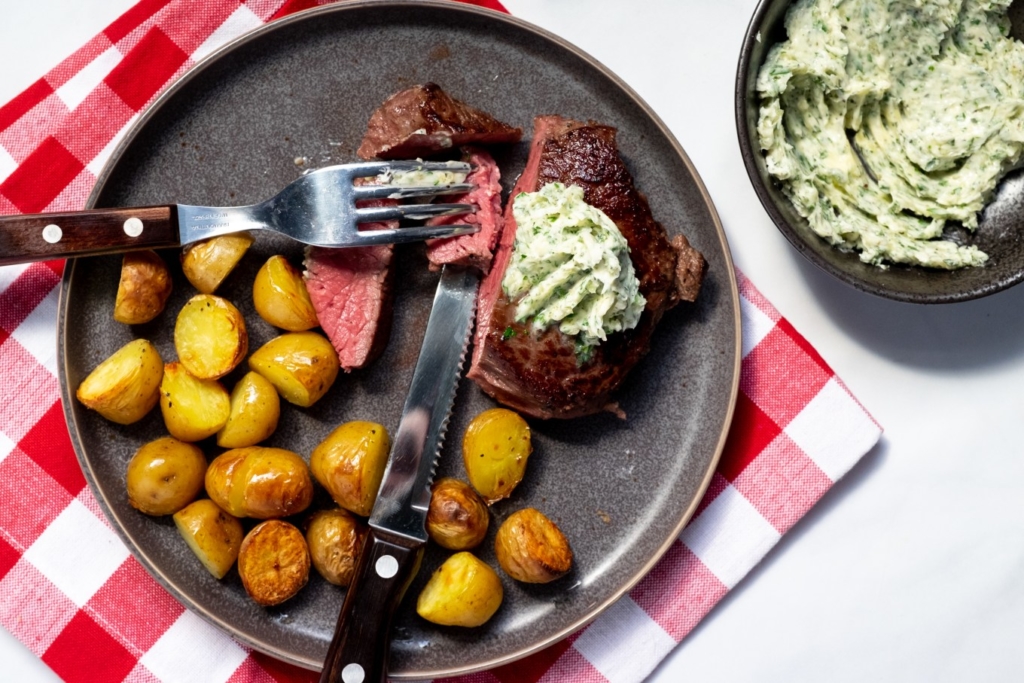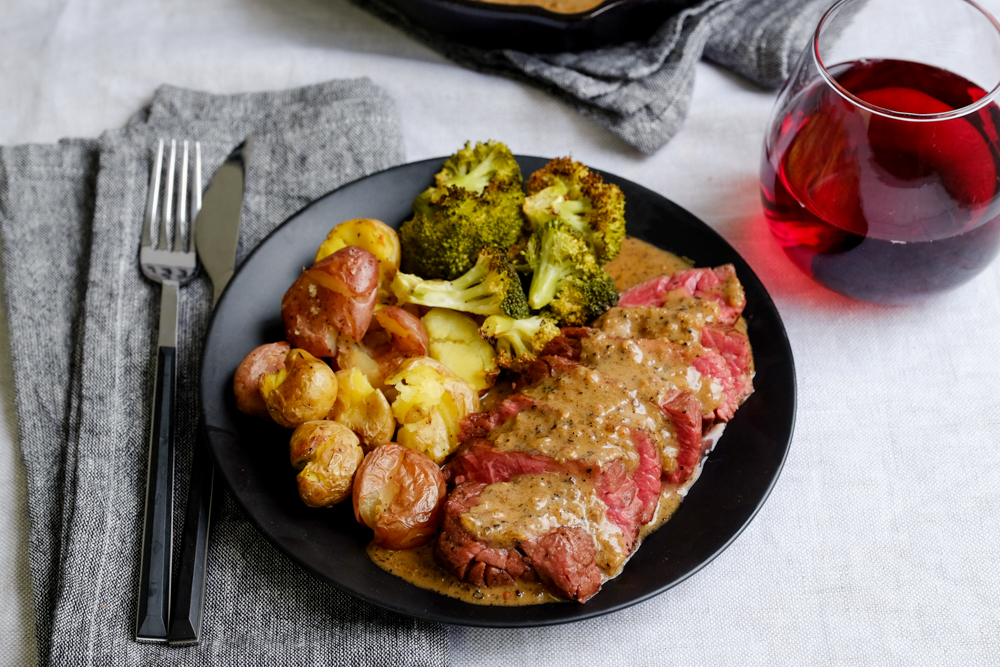Do you love the texture and taste of a perfectly marbled rib eye? Conversely, do you also hate this sought-after steak’s eye-popping price tag? If you answered “yes” to both of these questions then meet the steak of your dreams: chuck eye! Often referred to as the “poor man’s rib-eye”, chuck eye steaks are taken from the area of the cow where the rib-eye meets the chuck primal. The result is an incredibly affordable cut of beef that has a similar texture and flavor profile of steaks that cost twice as much. As is the case with steaks in general, sous vide is one of the best cooking methods for chuck eye. The precise control of sous vide lets you cook the steak to the ideal level of doneness while maintaining its moist and tender texture.
Follow this simple guide to prepare perfectly cooked chuck eye steak every time.
Temperature and cooking times for chuck eye steak
| Temperature | Time | Result |
| 125°F* | 1-3 hours | Rare |
| 130°F | 1-3 hours | Medium Rare |
| 135°F | 1-3 hours | Medium |
| 145°F | 1-3 hours | Medium Well |
| 150°F | 1-3 hours | Well done |

In terms of timing, our recommended cook times are based on a 1 1/2 inch thick steak. If your steak is thicker than 1 1/2 inches, consider adding about 30 minutes to the cook time. Chuck eye tends to have a similar degree of marbling and fat to meat ratio as rib-eye steak, so keep that in mind when selecting your preferred cooking temperature. Chuck eye is a tougher cut so you might want to cook it for longer than a rib eye in order to better break down the tougher connective tissue.
Follow this link to find out more information about Suvie cooking times and temperatures.
Ingredients and Tools
- Chuck eye steak(at least 1 1/2 inches thick)
- Salt
- Pepper
- Vegetable oil
- Herbs or additions
Equipment
- Suvie or immersion circulator
- A large pot (if using an immersion circulator)
- Vacuum sealer and bags or freezer safe recloseable bags
- A heavy, preferably cast iron, pan
Directions

If you’re using a sous vide immersion circulator, pre-heat your water bath to the desired temperature.

Season the steak generously on all sides with salt and pepper.

Place the steak into the plastic bag along with any herbs or additions and vacuum seal. If you’re using a recloseable bag, follow our guide on the water displacement method.
Lower the bag into the water bath and leave until cooked.
If you are using Suvie place the bag into a Suvie pan and cover completely with water. Place in Suvie and use the following settings:
Suvie Cook settings
Bottom Zone: Sous Vide at 125-150°F for 1-3 hours (based on desired doneness)
Top Zone: Sous Vide at 125-150°F for 1-3 hours (based on desired doneness)
Once the cook is done remove the bag from your Suvie or water bath.

Finishing
Remove the steak from the bag and pat dry with paper towels.
Pan Sear
Heat 1 tbsp vegetable oil in a cast-iron pan over high heat. Avoid using olive oil as it has a low smoke point and burns easily.
Once the oil begins to smoke, add the steak and cook without moving for 15 seconds.
Flip steaks and repeat on the opposite side for 15 seconds. Continue flipping steaks in 15-second intervals until both sides are well browned. Finally, using a pair of tongs, sear the edges and fat cap of steak.
Remove from heat and serve.

Recipes to try
Winter Steak Salad

Thai Steak Salad

Steak with Fresh Tomato Salad

Seared Steak with Farro and Garlicky Broccoli Rabe

Garlic Butter Steak with Crispy Potatoes

Chimichurri Steak

Steak au Poivre with Smashed Potatoes

FAQs
Are the cooking temperatures safe?
Our recommended cooking temperatures for Sous vide and Suvie are lower than what the USDA recommends, however, cooking times and temperatures are long enough and high enough for “pasteurization” to make your food safe. The USDA recommendations indicate the temperature needed to instantly kill food pathogens. By cooking for a longer time at a lower temperature we are able to achieve the same effect. However, high-risk populations should use extra caution when preparing foods below the USDA recommended temperatures.
Where can I get vacuum sealed proteins?
If you don’t want to fuss with vacuum sealers and recloseable bags you can skip the store and order the Suvie Protein Box. Just put together your ideal combination of preseasoned, portioned, and vacuum-packed high-quality meat, poultry, or fish. We deliver it to you frozen in a carefully-packed box.
Can I use any type of plastic bag?
You can, however, make sure that they are made from polyethylene. Brand name recloseable bags are made using polyethylene which is a BPA and dioxin free plastic that can safely handle sous vide cooking temperatures up to 190°F. Some generic branded plastic bags are made using cheaper polyvinyl chloride (PVC) which cannot handle high temps and contains chemicals that can leach into food.
Should I leave my steak to rest before serving?
Nope! One of the great things about cooking with Suvie and sous vide is the evenness of temperature. While the outer edges will be hotter from the sear, the interior of the steak will be cooked to the same temperature throughout. This means no resting time is necessary.
I forgot to defrost my steak, what now?
No problem! You can sous vide steak directly from frozen. Just add 1 hour to the cooking time.
Can I cool my steak after the sous vide process and sear it later?
For food safety and general food quality reasons, we don’t recommend it. Steak should be seared and eaten soon after the sous vide step.
Can I leave my steak in the water bath indefinitely?
You can, but you shouldn’t. While leaving steak in sous vide for long periods of time won’t result in overcooking, it will have a negative effect on the overall texture of the meat.



